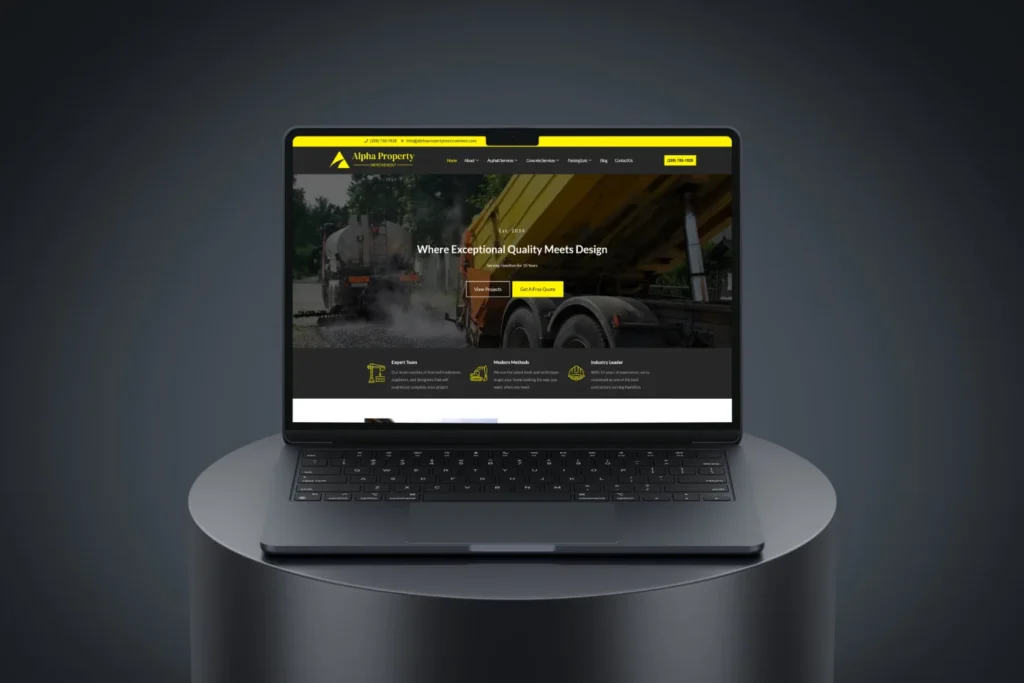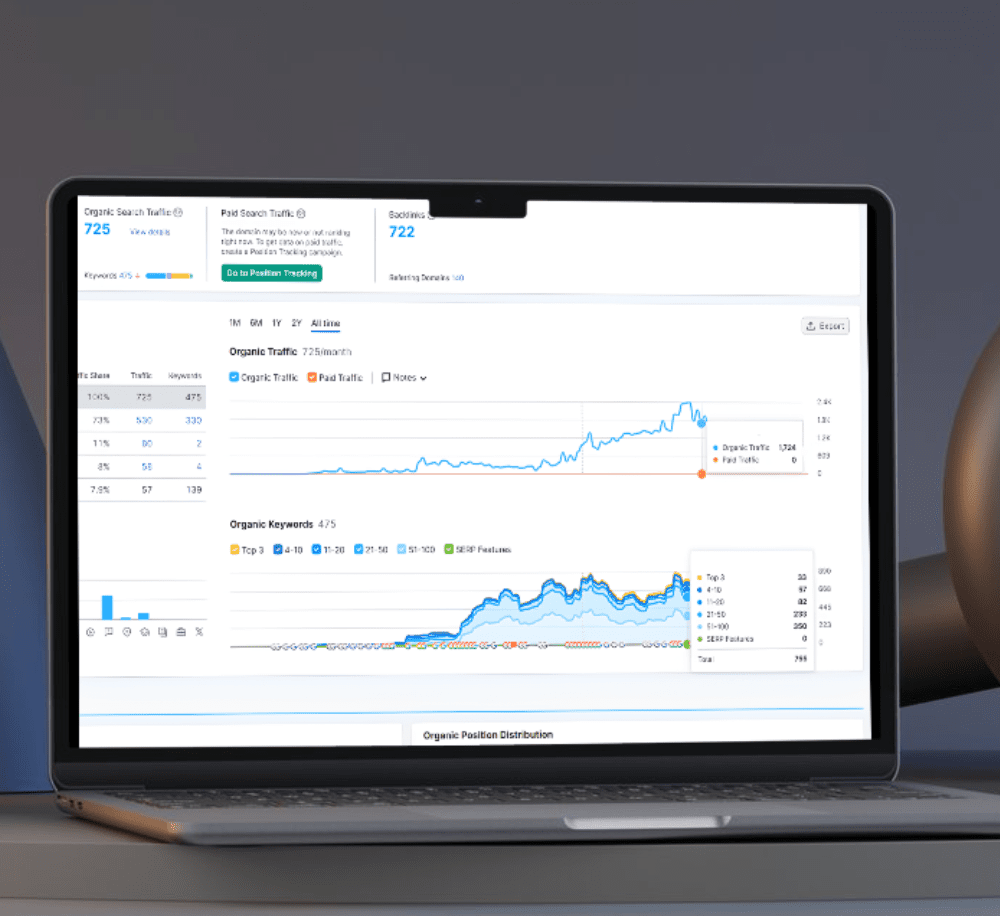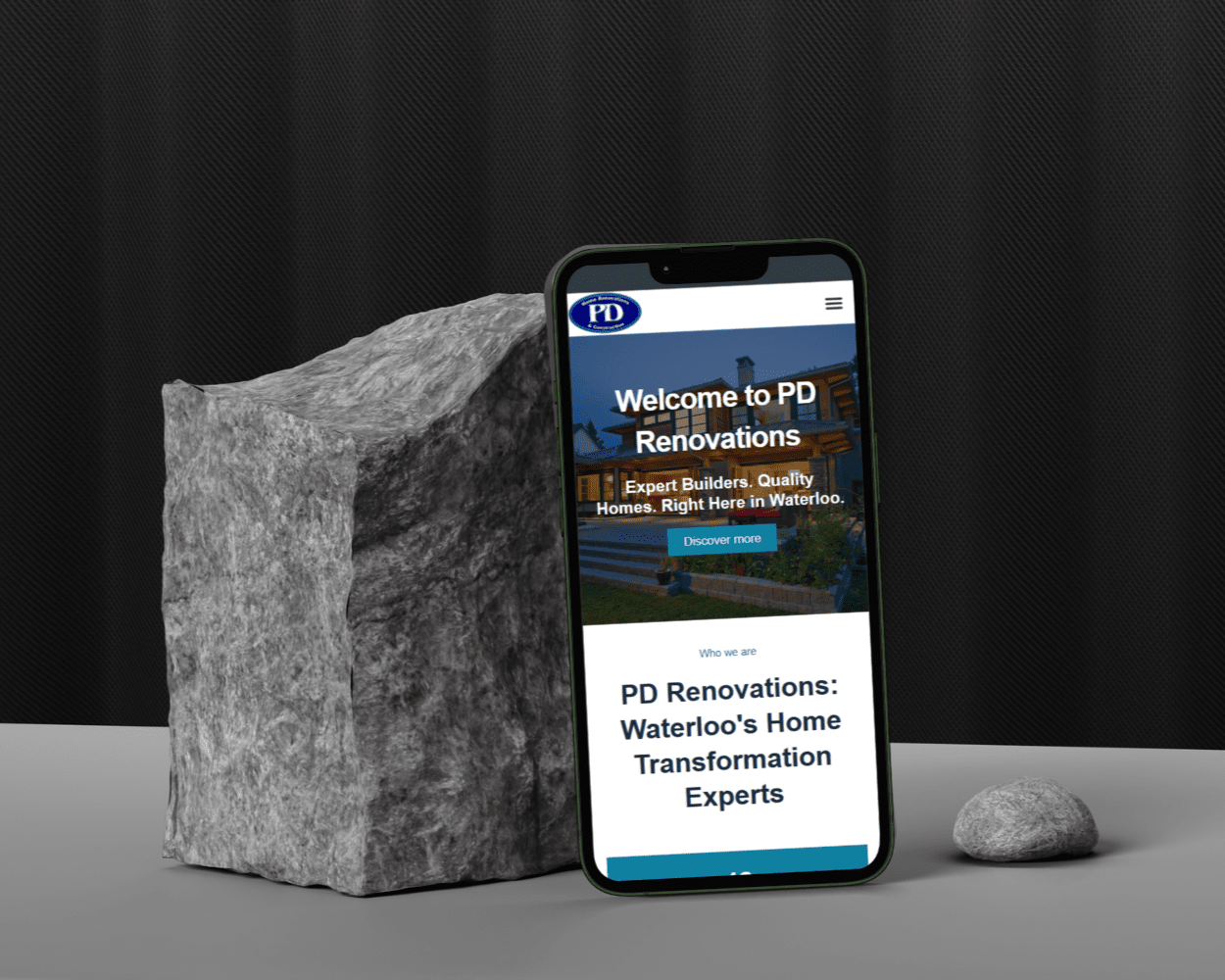Introduction to PPC Advertising
Pay-Per-Click (PPC) advertising has emerged as a pivotal tool for contracting businesses seeking to drive targeted traffic and achieve measurable results. At its core, PPC advertising is a digital marketing strategy where advertisers pay a fee each time one of their ads is clicked. Unlike organic traffic, which can take months to build, PPC offers immediate visibility and the potential for quick returns on investment.
The mechanics of PPC are straightforward yet powerful. Advertisers bid on specific keywords relevant to their business, and their ads appear on search engine results pages (SERPs) or on various websites within the ad network. When a user clicks on an ad, the advertiser is charged a small fee. This model ensures that the business only pays for actual engagement, making it a cost-effective way to attract potential customers.
For contracting businesses, the advantages of PPC advertising are numerous. One of the most significant benefits is the ability to reach a highly targeted audience. By selecting precise keywords and demographic parameters, businesses can ensure their ads are seen by individuals actively searching for contracting services. This level of targeting is challenging to achieve with traditional advertising methods, such as print or broadcast media.
Another compelling advantage of PPC is its cost-effectiveness. Since you are only paying for clicks, the expenditure is directly tied to user interest and engagement. Additionally, PPC platforms like Google Ads offer robust tools for ad optimization, allowing businesses to refine their campaigns continually for better performance and higher return on investment (ROI). This iterative process of monitoring and adjusting ensures that your advertising budget is utilized efficiently.
In comparison to other forms of advertising, PPC stands out for its ability to deliver quick and measurable results. The data-driven nature of PPC campaigns allows for precise tracking and analysis, enabling businesses to make informed decisions and optimize their strategies effectively. For contracting businesses looking to enhance their online presence and attract new clients, mastering PPC advertising is a crucial step toward sustained growth and success.
Setting Up Your PPC Campaign
Embarking on a PPC advertising journey for your contracting business requires meticulous planning and strategy. The first step involves selecting the right platform. Google Ads and Bing Ads are the most prominent choices, each with its unique audience demographics. Google Ads provides broad reach due to its extensive user base, while Bing Ads often offers less competition and potentially lower costs per click. Determining which platform aligns best with your target audience is crucial.
Once you’ve chosen your platform, creating an account is straightforward. For Google Ads, visit ads.google.com and follow the prompts to set up your account. Similarly, navigate to ads.microsoft.com for Bing Ads. During this setup, you’ll need to provide basic business information and billing details.
Setting your budget is the next pivotal step. Decide on a daily or monthly budget that aligns with your advertising goals and financial capacity. It’s essential to strike a balance between sufficient spending to gain visibility and ensuring a sustainable expenditure. Utilize the platform’s budget recommendation tools to get a sense of competitive spending ranges in your industry.
Defining your campaign objectives is another critical component. Objectives might range from increasing website traffic, boosting lead generation, to driving sales or improving brand awareness. Clear objectives guide your campaign structure and inform your ad copy, targeting, and overall strategy.
Keyword research and selection are the foundations of a successful PPC campaign. Employ tools like Google Keyword Planner to identify keywords relevant to your contracting business. Focus on keywords that strike a balance between high search volume and low competition to maximize your return on investment. Include both broad and long-tail keywords to capture a wide range of potential customers.
Incorporate negative keywords to filter out irrelevant traffic, thereby ensuring your ads reach the most pertinent audience. Regularly review and refine your keyword list based on performance data to enhance ad optimization and overall campaign efficiency.
By meticulously setting up your PPC campaign—choosing the right platform, creating an account, setting a realistic budget, defining clear objectives, and conducting thorough keyword research—you lay a solid foundation for driving targeted traffic to your contracting business and maximizing your advertising ROI.
Creating Effective Ad Copy
Creating effective ad copy is a critical component in driving targeted traffic to your contracting business through PPC advertising. The first element to consider is the headline. A strong headline grabs attention immediately and sets the stage for the rest of the message. It should be both engaging and relevant to your audience’s needs, as this is the first impression potential clients will have of your campaign.
Next, focus on clear and concise messaging. Your ad copy should communicate the value proposition of your contracting services succinctly. Avoid jargon and overly complex language; instead, use straightforward, compelling statements that highlight the benefits of your services. Remember, the goal is to make it easy for potential clients to understand what you offer and why they need it.
A compelling call-to-action (CTA) is another crucial element. Your CTA should encourage immediate action, whether it’s to click on your ad, visit your website, or contact your business. Effective CTAs often use action-oriented language such as “Get a Free Quote,” “Schedule a Consultation,” or “Learn More.” This not only guides the user on what to do next but also creates a sense of urgency and importance.
To enhance the effectiveness of your ad copy, consider incorporating power words and emotional triggers. Words like “exclusive,” “guaranteed,” and “proven” can add a level of persuasiveness to your messaging. Additionally, tapping into emotions such as trust, fear of missing out (FOMO), or the desire for quality can significantly boost engagement and conversion rates.
Finally, the significance of A/B testing cannot be overstated. By testing different versions of your ads, you can determine which headlines, messages, and CTAs resonate best with your audience. A/B testing allows you to make data-driven decisions, optimizing your ad copy for maximum effectiveness and ensuring a higher return on investment (ROI) for your PPC campaigns.
Landing pages play a pivotal role in the success of a PPC advertising campaign, particularly for contracting businesses aiming to convert targeted traffic into tangible leads. These specialized pages are designed to capture the attention of visitors and guide them towards taking a specific action, such as filling out a contact form or requesting a quote. To achieve high conversion rates, it is crucial to design landing pages that are both engaging and functional.
One of the most important elements of an effective landing page is a clear and relevant headline. The headline should immediately communicate the value proposition and align with the ad that brought the visitor to the page. This consistency helps in building trust and ensures that the visitor knows they are in the right place.
Persuasive copy is another essential component. The text on the landing page should be concise, focusing on the benefits and unique selling points of your contracting services. It is important to address potential pain points and clearly articulate how your services provide solutions. Using bullet points can help in making the information easily digestible.
A strong Call to Action (CTA) is crucial for driving conversions. The CTA should be prominently displayed and use action-oriented language to encourage visitors to take the desired step, whether it’s contacting you, signing up for a newsletter, or scheduling a consultation. Phrases like “Get a Free Quote” or “Schedule Your Consultation Today” can be effective.
Page load speed and mobile-friendliness are vital for user experience. Slow loading times can lead to high bounce rates, while a mobile-optimized design ensures that visitors on smartphones and tablets have a seamless experience. Given the increasing use of mobile devices, neglecting this aspect can significantly impact conversion rates.
Visual elements such as images and videos can enhance the appeal of your landing page. High-quality images of your completed projects or a short video explaining your services can make the page more engaging and help in building credibility. However, it’s important to optimize these elements to prevent them from slowing down the page.
By focusing on these key aspects—clear headlines, persuasive copy, strong CTAs, fast load times, mobile optimization, and engaging visuals—you can design landing pages that effectively convert targeted traffic into valuable leads for your contracting business.
PPC advertising offers a variety of targeting options to help contracting businesses reach their desired audience effectively. Demographic targeting allows advertisers to tailor their ads based on age, gender, income, and other demographic factors. This ensures that the ads are shown to individuals who are most likely to be interested in contracting services, thereby increasing the chances of conversion.
Geographic targeting is another crucial aspect of PPC advertising. It enables businesses to focus their ads on specific locations, such as cities, regions, or even zip codes. For a contracting business, this is particularly beneficial because it allows for the concentration of advertising efforts in areas where the services are offered. This precise targeting helps in driving highly relevant traffic to the website.
Remarketing is a powerful strategy that involves targeting individuals who have previously visited your website but did not convert. By showing ads to these potential customers as they browse other websites, you can remind them of your services and encourage them to return and complete their purchase. This can significantly boost conversion rates and ROI.
Choosing the right bidding strategy is crucial for the success of your PPC campaign. Common bidding strategies include Cost-Per-Click (CPC), Cost-Per-Mille (CPM), and Cost-Per-Acquisition (CPA). CPC is a popular choice for businesses looking to drive traffic to their website, as you only pay when someone clicks on your ad. CPM, which charges per thousand impressions, is ideal for brand awareness campaigns. CPA, on the other hand, is suitable for campaigns focused on specific actions, such as form submissions or purchases, as you only pay when the desired action is completed.
To maximize the effectiveness of your ads, consider setting bid adjustments based on device, location, and time of day. For example, if you notice that most conversions occur on mobile devices, you can increase your bids for mobile traffic. Similarly, if certain locations or times of day yield better results, you can adjust your bids accordingly to allocate more budget to high-performing segments. By fine-tuning these parameters, you can ensure that your PPC campaigns are optimized for the highest possible ROI.
Monitoring and Analyzing Campaign Performance
Ensuring the success of your PPC advertising campaigns necessitates continuous monitoring and in-depth analysis. This ongoing process involves utilizing various analytics tools to scrutinize key performance metrics, which are critical in evaluating the effectiveness of your campaigns. By keeping a close watch on these metrics, you can make informed decisions that enhance the overall performance of your PPC efforts.
Firstly, the click-through rate (CTR) serves as a fundamental indicator of how well your ads are resonating with the target audience. A high CTR implies that your ads are engaging and relevant, driving more potential clients to your site. Conversely, a low CTR may indicate the need for better ad copy or more precise keyword targeting.
Next, the conversion rate is pivotal in understanding the efficacy of your PPC advertising. This metric reveals the proportion of visitors who take a desired action, such as filling out a contact form or making a purchase, after clicking on your ad. A high conversion rate signifies that your landing pages and overall user experience are well-optimized to meet user expectations.
Cost per acquisition (CPA) is another crucial metric, reflecting the average cost incurred to acquire a new customer. By monitoring CPA, you can gauge the financial efficiency of your campaigns. Lowering your CPA while maintaining or improving conversion rates is an indicator of successful ad optimization.
Return on investment (ROI) is the ultimate measure of your campaign’s profitability. This metric calculates the revenue generated from your PPC advertising relative to the costs involved. A positive ROI confirms that your campaign setup and ad strategies are yielding financial benefits, whereas a negative ROI signals the need for strategic adjustments.
Interpreting these metrics requires a nuanced approach. For instance, if your CTR is high but conversion rate is low, this could point to issues with your landing page rather than your ad content. Continuous analysis enables you to identify such discrepancies and make data-driven improvements. Utilizing analytics tools like Google Analytics or dedicated PPC management platforms, you can gain valuable insights and refine your campaigns to drive targeted traffic more effectively.
Optimizing for Maximum ROI
Achieving the highest possible ROI in PPC advertising requires a multifaceted approach, beginning with the refinement of keyword lists. Regularly auditing and updating your keyword lists ensures that your ads are targeting the most relevant and high-converting search terms. Focus on long-tail keywords that are more specific and less competitive, which can drive highly targeted traffic to your contracting business.
Adjusting bids is another crucial aspect. Utilize bid adjustments to allocate more budget towards high-performing keywords and reduce spend on underperforming ones. This dynamic management allows you to maximize the efficiency of your campaign budget. Platforms like Google Ads offer automated bid strategies, such as Target CPA (Cost Per Acquisition) and Target ROAS (Return on Ad Spend), which can optimize bids based on real-time data.
Improving ad relevance is essential for achieving a higher Quality Score, which can lower your cost per click and improve ad positioning. Craft compelling ad copy that closely matches the intent of your keywords and includes strong calls-to-action. Additionally, regularly A/B test different ad variations to identify which messages resonate most with your audience.
Enhancing landing page quality is equally important. Ensure that your landing pages are highly relevant to your ads, load quickly, and offer a seamless user experience. Incorporate clear and concise headlines, engaging visuals, and easy-to-navigate forms. High-quality landing pages not only improve your Quality Score but also increase conversion rates, directly impacting your ROI.
Leverage negative keywords to filter out irrelevant traffic and reduce wasted spend. By excluding search terms that are not relevant to your contracting services, you can ensure that your ads are shown only to users who are more likely to convert.
Lastly, consider using automation tools for bid management and ad rotation. These tools can save time and improve efficiency by automatically adjusting bids based on performance metrics and rotating ads to identify the best-performing versions. Implementing these advanced strategies will help you optimize your PPC campaigns effectively, driving maximum ROI and ensuring sustained growth for your contracting business.
Case Studies and Success Stories
In the realm of contracting businesses, PPC advertising has demonstrated its efficacy in driving targeted traffic and achieving significant business milestones. Let us delve into some real-life examples that illustrate the transformative power of well-executed PPC campaigns.
One notable case is that of a mid-sized roofing company based in the Midwest. Facing stiff competition and a plateau in organic traffic, the company turned to PPC advertising to rejuvenate its lead generation efforts. Their strategy involved rigorous keyword research to identify high-intent search terms related to roofing services. By crafting compelling ad copy and leveraging geo-targeting to focus on their service area, they managed to attract a more relevant audience. Despite initial challenges in ad optimization, the company persevered, continuously refining their ads based on performance data. The results were striking: a 50% increase in qualified leads within three months, coupled with a noticeable improvement in ROI.
Another inspiring example comes from a home renovation business operating in the Northeast. Struggling with seasonal fluctuations in demand, they sought to stabilize their lead flow through PPC advertising. Their campaign setup was strategically planned to target homeowners interested in renovations during the off-peak season. They employed ad extensions to highlight special offers and client testimonials, which bolstered their ad’s credibility. Through meticulous A/B testing and budget adjustments, they overcame initial challenges and optimized their ad spend. The campaign’s success was evident in a 40% rise in website traffic and a 30% increase in project bookings during typically slow periods.
Lastly, consider the case of a plumbing contractor in a competitive urban market. Their PPC advertising approach was distinctive due to its focus on local SEO integration and mobile optimization. Recognizing the growing trend of mobile searches for emergency plumbing services, they tailored their ads to provide quick, actionable information to users on the go. By optimizing landing pages for mobile and using call-only ads, they significantly improved their conversion rates. The campaign yielded impressive outcomes, including a 60% boost in emergency service calls and a substantial reduction in cost-per-click.
These case studies underscore the potential of PPC advertising in driving targeted traffic and achieving business goals. Each example highlights the importance of strategic planning, continuous ad optimization, and adaptability in overcoming challenges. Contracting businesses can draw valuable insights from these success stories to enhance their own PPC campaigns and drive meaningful results.




